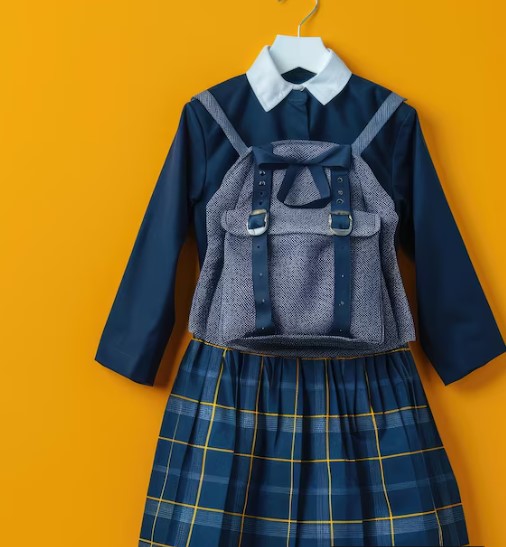
Designing Culturally Appropriate School Uniforms in Saudi Arabia: A 2025 Comprehensive Guide
School uniforms in Saudi Arabia play a significant role in fostering a sense of identity, equality, and discipline among students. As the Kingdom advances its Vision 2030 educational goals, designing these uniforms requires a thoughtful approach that balances cultural appropriateness with modern educational needs, ensuring comfort, practicality, and alignment with Islamic values while supporting the Kingdom's progressive educational aspirations.
The Importance of Cultural Sensitivity in KSA School Uniform Design (SEO Keyword: Saudi School Uniform Standards)
In 2025, Saudi Arabia's educational landscape continues to evolve under Vision 2030, emphasizing the need for school uniforms that reflect both tradition and progress. Cultural sensitivity in uniform design is not just about compliance—it's about creating an environment where students feel respected, comfortable, and proud of their heritage while engaging in modern learning.
Core Principles of Culturally Appropriate Design
Several key principles guide the design of school uniforms that resonate with Saudi culture:
- Modesty (Hishmah): This is paramount. Uniforms for both boys and girls should provide adequate coverage, adhering to Islamic principles of dress. This typically means loose-fitting garments, longer sleeves, and appropriate lengths for skirts, dresses, or thobes.
- Comfort and Climate Adaptability: Given the Saudi climate, fabrics must be breathable and lightweight. Materials like high-quality cotton, linen blends, and modern moisture-wicking fabrics are ideal.
- Practicality for School Activities: Uniforms should allow for ease of movement for various school activities, including physical education, without compromising modesty.
- Reflection of National Identity: Incorporating subtle elements that reflect Saudi heritage or national symbols can instill a sense of pride, though this should be done tastefully and not overtly.
- Durability and Ease of Care: Fabrics should be durable enough to withstand daily wear and frequent washing, and easy for parents to maintain.
Uniform Design Considerations for Girls
For female students, uniforms often consist of:
- Long-sleeved, loose-fitting dresses or tunics (jalabiyas or abayas designed for school wear).
- Full-length skirts or loose trousers worn underneath tunics.
- A headscarf (hijab or shayla) is typically part of the uniform, often in a color that complements the main uniform.
- Colors are usually subdued, though school-specific colors can be incorporated respectfully.
The design should ensure that the hijab stays in place comfortably throughout the school day and during activities.
Fabric Spotlight: Breathable Cotton
Natural cotton and cotton blends are excellent choices for Saudi school uniforms due to their breathability, softness, and hypoallergenic properties, ensuring comfort in warm weather.
Uniform Design Considerations for Boys
For male students, common uniform elements include:
- A thobe (the traditional long white robe), often adapted for practicality in a school setting (e.g., slightly shorter, more durable fabric).
- Alternatively, long trousers and a long-sleeved shirt, ensuring modest coverage.
- Some schools may incorporate a traditional ghutra or shemagh for formal occasions or as an optional item.
- Colors are typically white, navy, grey, or other conservative shades.
Incorporating School Identity
While adhering to cultural norms, schools can still express their unique identity through:
- Logos and Emblems: Discreetly embroidered school logos on pockets or sleeves.
- Color Accents: Using school colors in piping, collars, cuffs, or for the hijab for girls.
- Standardized Accessories: Such as school-specific bags or ties (if applicable).
2025 Trends in Saudi School Uniform Design (SEO Keyword: Modern School Uniforms KSA)
As we advance through 2025, several trends are shaping school uniform design in Saudi Arabia:
- Sustainable Materials: Eco-friendly fabrics that align with Saudi Arabia's environmental initiatives under Vision 2030.
- Smart Textiles: Integration of temperature-regulating fabrics and moisture-wicking technologies for enhanced comfort.
- Adaptive Design: Uniforms that accommodate students with different physical needs while maintaining cultural appropriateness.
- Digital Integration: Incorporation of QR codes or NFC tags for school identification and safety purposes.
- Seasonal Variations: Lightweight summer options and warmer winter alternatives that maintain modesty standards.
Consultation and Collaboration
The most successful culturally appropriate school uniforms are often the result of collaboration between uniform designers, school administrators, parents, and sometimes even students. This ensures that the final designs meet all practical, cultural, and aesthetic requirements while supporting the educational goals of Vision 2030.
Conclusion
Designing school uniforms in Saudi Arabia is an exercise in respecting tradition while embracing functionality. By prioritizing modesty, comfort, and practicality, schools can provide uniforms that students wear with pride, contributing to a positive and focused learning environment that aligns with the Kingdom's cultural and educational aspirations. As we move forward in 2025, the integration of modern technologies and sustainable practices will continue to enhance the quality and appropriateness of school uniforms in the Kingdom.
About the Author
The UniformSA Team comprises experts in uniform design and manufacturing, with a deep understanding of cultural requirements and industry best practices in Saudi Arabia.
Share This Guide
Related Topics
Need School Uniform Consultation?
Get expert guidance on culturally appropriate school uniform design for your KSA institution.
Request Consultation